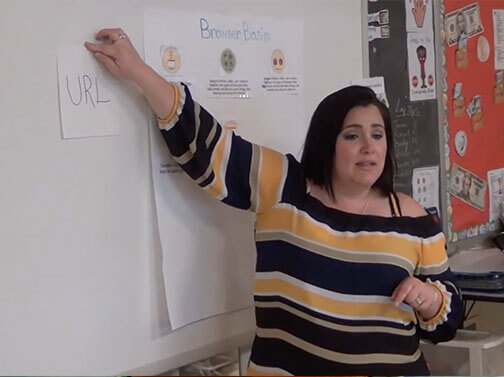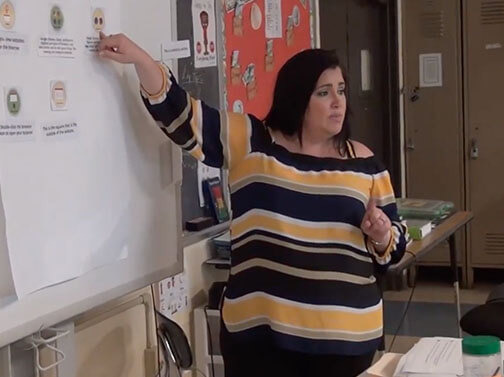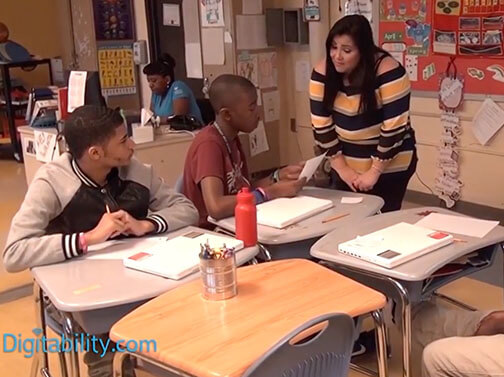Using Task Attendance, Prompting & Motivation in the Guided Watching Section of Your Digitability Lesson Plan
Throughout the facilitation of the lesson’s Guided Watching, teachers should strive to have all students actively engaged in the lesson video. In order to achieve this, teachers use the Thumbs Up engagement strategy. The Thumbs Up strategy is when a teacher tasks all students with providing a thumbs up every time they hear the key vocabulary word for that lesson in the lesson video.
The Thumbs Up strategy aims to include and engage every student in the class. By giving a thumbs up each time students hear the key vocabulary term in the video, they are demonstrating active listening and engagement with the lesson video.
The teacher will preface the lesson video by saying “Let’s watch this training video. I know that (Student Name) is actively watching because he has his eyes on the screen. When you hear the word ‘(key vocabulary term)’ give me a thumbs up and I’ll add Participation Dollars.” This lets students know that the expectation is to give a thumbs up when they hear the key word, and that they will earn Participation Dollars for doing so.
Every time a student gives a thumbs up, the teacher rewards them with a Participation Dollar. Doing this not only reinforces the student for participating, but increases student motivation to actively engage with the lesson video. Students are motivated to earn dollars, therefore, they will be motivated participate in the Thumbs Up engagement strategy.
Teachers can use prompting to help students with using the Thumbs Up strategy. The five types of prompting include verbal, gestural, modelling, positional, and physical. Examples of how each type of prompt can be used with the Thumbs Up strategy are:
Verbal: The teacher can say "I heard the word _____, remember to give a thumbs up when you hear that word!"
Gestural: The teacher can point to/gesture toward students who are giving a thumbs up when they hear the key word.
Modeling: The teacher can give a thumbs up themselves when they hear the key vocabulary word.
Positional: The teacher can move the student closer toward a peer who is consistently giving a thumbs up when they hear the key vocabulary word.
Physical: The teacher can tap a student's hand when the video says the key vocabulary word as a reminder to give a thumbs up.
Teachers can use the Thumbs Up engagement strategy to increase motivation and time-on task attendance, laying the foundation for Workplace Behavior.
See a Teacher Using This Practice
Get Your FREE Quote Today!
Throughout the facilitation of the lesson’s Guided Watching, teachers can use the Thumbs Up engagement strategy to increase motivation and time-on task attendance, laying the foundation for Workplace Behavior Training.
Task Attendance, Prompting & Motivation: Warm-Up
Teachers increase motivation and time-on-task attendance, laying the foundation for Workplace Behavior Training. Learn More
Five Types of Prompting: Informal Assessment.
Teachers increase their use of prompting methods throughout the Informal Assessment. Learn More
Increasing or Decreasing Attendance: Guided Watching.
During the Guided Watching, teachers adjust instruction based on student needs and comprehension. Learn More
Ready to bring Digitability to your school?
Complete the form on this page to request free quote!



